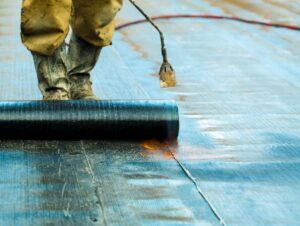HDPE geomembrane is mainly used in the following aspects:
Anti-infiltration: As a waterproof layer, HDPE geomembrane can effectively prevent the infiltration of water, liquid or gas. It can be used in various civil engineering projects, such as water conservancy projects, sewage treatment plants, landfills, etc., to isolate groundwater and surface soil.
Isolation protection: Geomembranes can be used to isolate the interaction between different soil qualities. For example, in highway engineering, if the subgrade soil is in contact with soil with high salinity, the salt in the soil may cause damage to the subgrade. Geomembrane can be used as a physical isolation layer to prevent mutual penetration and chemical reaction between soils, and protect the stability of the roadbed.
Reinforcing support: In some cases, geomembranes can provide the effect of increasing the strength and stability of the soil. For example, geogrid structures are used in civil engineering to form a network structure by embedding geomembranes into the soil, which can increase the shear strength and erosion resistance of the soil.
Anti-corrosion: For projects that need to protect metal structures or pipelines, geomembranes can be used as an anti-corrosion layer to prevent corrosion. It can isolate the contact between the metal structure and the external environment, prevent chemical substances, moisture, etc. from corroding the metal, and prolong the service life of the structure.

The production process of HDPE geomembrane usually includes the following steps:
Material preparation: First, high-density polyethylene (HDPE) resin pellets need to be prepared as raw materials. These particles will be heated and melted to form a geomembrane.
Extrusion molding: put HDPE pellets into the extruder, and heat and knead under high temperature and high pressure. This will melt the particles and form a continuous melt.
Calendering: After passing through the extruder, the molten HDPE is extruded from the die in the form of continuous strips, and then rolled and stretched by rollers to make it flat and uniform.
Cooling and Cutting: The geomembrane moves on a conveyor belt and passes through coolers where it cools to solidify and increase strength. Subsequently, the membrane is cut to the desired size and length as required.
Inspection and quality control: After the production is completed, a series of inspections and quality controls are carried out on the geomembrane to ensure that it meets the specified technical requirements, such as thickness, tear resistance, chemical resistance, etc.
Packaging and storage: Through packaging and identification, geomembranes are sorted, packaged, and stored under appropriate conditions to ensure that the quality is not compromised.

The following points should be paid attention to when welding HDPE geomembrane:
Clean the surface: Make sure the surface of the welding area is clean and flat, and remove dust, oil and other impurities.
Welding temperature: Adjust the welding temperature according to the type and thickness of the geomembrane. Generally, the welding temperature range of geomembrane is between 200°C and 240°C.
Welding speed: Control the welding speed to ensure an even and firm weld. Excessive welding speeds can result in poor weld quality.
Pressure adjustment: Properly adjust the pressure of the welding machine or manual welding tools to ensure that the weld is welded under proper pressure.
Weld seam inspection: After welding is completed, the quality of the weld seam should be carefully inspected to ensure that there are no obvious bubbles, cracks or unevenness.
Operation skills: Master the correct welding skills, maintain a stable welding posture, and avoid misoperation or improper use of equipment.


